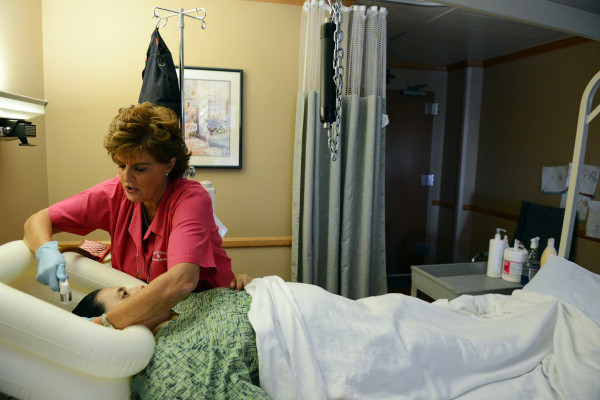As a nursing family, I am very happy to do my part as a Steemian to share the knowledge I have known to assist a patient. By reading this shared procedure, we can always do this at home. In this article, I would teach you how to shampoo a patient. This thought is to eliminate the dirt from the patient's hair and keep him fresh and comfortable all day. The objectivities are cleaning the patient's hair and head, implementing a physical and psychological comfort, and finalizing the prediculli treatment.
Before we begin, remember these things:
Assesment
1. Identify the status of the scalp and hair.
2. Level of support and altering the condition of the patient.
3. Tools and equipment should always be ready.
Planning
1. Know the needs of the doctor.
2. Tell the patient's routine when to apply her hair a shampoo.
3. There must be a privacy.
4. Equipment:
hairbrush and comb
the shampoo according to the patient's preference
1 jar of cotton balls
a pitcher of water with 43-44 degree Celsius or 110 degrees Fahrenheit
pail
rubber sheet
bath towel
pad
hair dryer
5. Remember the previous principles.
6. Plan to modify
Procedure:
1. Tell the patient the whys and when. He should know the schedules and the reason why he is shampooed.
2. The equipment is found at the bedside before doing the procedure. This is to avoid absorbing times to get the materials in the other area and to avoid stretching and overreaching.

3. Wash your hands thoroughly to inhibit the microorganisms spread.
4. Provide a bedpan or tell the patient to use the toilet to avoid increasing microorganisms.
5. Scatter newspaper on the floor and place the pail on it. This idea is to avoid wetting the floor.
6. Encourage the patient to position diagonally in the bed which the head is nearby the bedside so it will be washed easily. The patient can do the supine position and eyes and face are not going to wet.
7. Remove the hair pains and any other jewelry in the head; brush it slowly and comb so the knots will be removed.
8. Place the plastic sheet on the bed or the pad below the head below the cushion. The plastic prevents water leaks in the bed.
9. Use the bath blanket as replacement of the top sheet. Get the pillow gently beneath the patient's head and cover the cushion with waterproof covering line along the towel under the patient's shoulders to bend his head backward. Blanket prevents the chilling. It also hyperextends neck. It blocks the shoulder to wet.
10. Tuck bath towel around the patient's shoulders so he lays in a comfortable position and it also supports the patient's neck muscles.
11. Beneath the head, place the Kelly pad that is inflated, along with the tail of the pail. While the patient's neck relaxes on the edge of the Kelly Pad, place a folded washcloth. Pad is an alternative.
12. To avoid the eyes from the soapy water, put a washcloth that is damp to the patient's eyes. The damp cloth prevents slipping.
13. Place cotton balls inside the patient's ear to prevent the ear canal collecting water.
14. It is important to use the pitcher to achieve the desired water temperature.
15. Begin applying shampoo to the scalp. Use the pads of the fingertips to stroke the head to achieve a good lathering. Do the procedure systematically such as beginning at the front and working the back later. Massage therapy when rinsing can normalize the blood circulation of the scalp. It is always required to use the finger pads to avoid wounding patient's head by our nails or scratching too much. If it is pediculi, just massage the face and hair through washed clothes and damped to lather. Pediculi adheres to a washcloth.
16. Rinse thoroughly and apply the shampoo twice. Lather finely and massage. The left shampoo in the head may dry the hair and burns the scalp.
17. Wash the hair well to assure that there is no shampoo left. If the patient demands conditioner, do it and wash again.
18. Clutch the hair by your hands with water and bypass pulling it.
19. Take the washcloth and cotton balls and dry the forehead and ears with face towel.
20. Get the Kelly pad beneath the head and put it under the pail.
21. Cover patient's hair with a towel and wrap to drain.
22. Dry the hair and help the patient to comb it.
23. Help the patient to look tidy and feels comfortable in his clothes.
24. Wash your hands thoroughly.